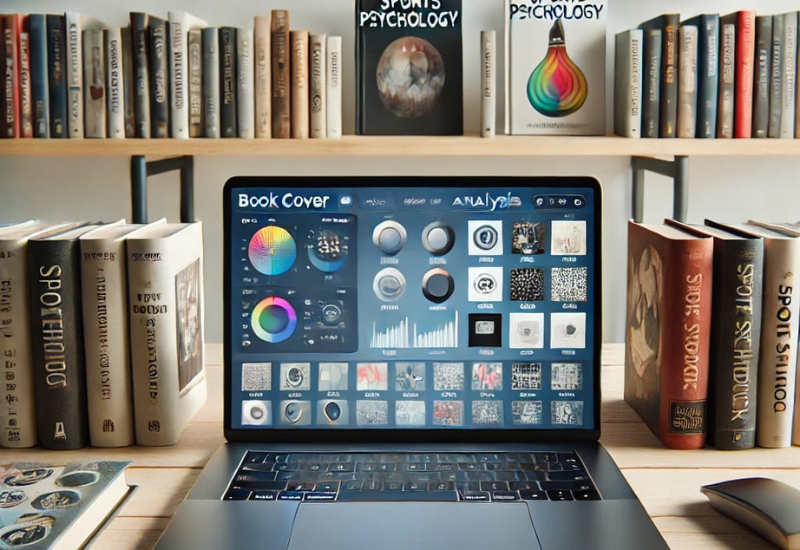- August 27, 2024
- Posted by: Nouman
- Category: Book Cover Design

“So, it says: ‘Do not judge a book based by its cover’, But at speedily escalating Ecommerce you need to draw attention of potential buyer in the initial 5 seconds. The book cover is the first thing a prospective buyer can see in mere seconds and that´s why has precedence how should designers work with to quickly convey what they are trying to say, who it resonates with so you achieve more sales.
Thanks to AI tools like ChatGPT, authors and designers can now analyse what works well on custom book cover designs by examining these patterns — allowing them deconstruct how impactful cover designs are made. In this post, we will break down the genre cover best sellers in sports psychology from the 5 drivers and get a start-up template for your own chatbot analysis.
Book Covers Analyzed:
- “Young Athletes’ Ultimate Guide to Mental Toughness” by Chad Metcalf
- “The Unstoppable Athlete” by Andrew J Simpson
- “Mental Toughness for Young Athletes” by Moses and Troy Horne
- “The Champion’s Mind” by Jim Afremow, PhD
Essential Aspects of Book Covers that Work:
1. Title and Subtitle Font
Large, Bold Lettering:
The titles of each book on the first four covers are large and set in fonts which make them highly readable from far away. This is essential to catch the eye of potential readers in a competitive market, especially when viewed on-line as thumbnails.
Different Color Contrasts:
Most of the time, titles use contrast colors to differ from background. An example of color contrast at use is “The Unstoppable Athlete,” which combines red and black text in a way that immediately informs the reader where to look.
Subtitles are complimentary:
Amazon gives the most weight to its subtitles so, these fall below Deadpool’s and at a smaller but still robust size that makes them obvious while not stepping over his name. The Champion’s Mind does just that, almost disappearing as the subtitle below the main title in white font on a black background.
2. Use of Imagery
Dynamic and Energetic
Action-inspired that (usually) suggest the central theme of a book. Both of the above books — Young Athletes’ Ultimate Guide to Mental Toughness and The Unstoppable Athlete feature images showing athletes in motion, representing energy, resilience, power.
Metaphorical Imagery:
A few covers use an object to symbolize the inspiration, like a lion’s face coming together with a young athlete’s peers in one of those pictures from “Mental Toughness for Young Athletes”, showing what inner strength and will look.
3. Color Schemes
Bright and Bold:
The use of bright colors such as orange, red or yellow are very common which helps to create a lively aesthetic that should appeal to the target customers. For instance, “The Unstoppable Athlete” has bolded text on a bright yellow gradient background.
Dark & Intense :
On the other hand,”The Champion’s Mind” uses a dark background to state an intense focus which make sense as this one is about Agression in Elite sporting mindset.
Balance and Harmony
Colors are selected to compliment, not dominate any other aspect of the covers. This balance is important for creating a harmonious and polished design.
4. Success Formula
So after reviewing, we can extract a formula of success for a good book cover design as:
Large Legible Typeface:
Titles should be feature large, bold type in a sans serif font that have high contrast to the background. Keep subtitles visible and descriptive.
Dynamic Imagery:
Make sure that your chosen imagery reflects the theme of the book in some way – through action shots, metaphorical representation or simple minimalism.
Strategic Use of Color:
Choose bright or dark color schemes that reflect the theme of your book. Counterbalances the colours to help retention of visual harmony.
Visual Hierarchy
An excellent visual hierarchy will lead the eye of a reader/viewer to look from title to subtitle image in sequence.
Cover Design Analysis with ChatGPT Prompt Template
The following prompt can help you closely analyse custom book cover designs using ChatGPT:
- Name : Title Font — This is the font style that will include title but is it bold, serif or sans-serif? Is the color in contrast to the background?
- Subtitle Font: Consider the style of the subtitle font, its size and color. Does it complement the title? Where is it located relative to the Title?
- Imagery- which includes the imagery that was used in the passage. Does it veer more towards the action oriented, or symbolic?, maybe minimalist? What does the image say about a theme in the book?
- Color Palette: Asses the colours chosen. Are they vibrant or subdued? How do the differentiation of colors hints to your overall emotion on a cover?
- Room for Overall Layout — Think about the Cover-area of your layout. Does it have a visual hierarchy? How balanced are the elements? How the layout makes us feel?
- Success Factors – What did the analysis find made a cover design successful in attracting the desired target audience?
Please, let me know what can be done better regarding the cover design.
Conclusion
With the help of ChatGPT, authors can also explore successful covers by breaking them down to actionable items in creating a book cover. This is how we figure out what design elements such as fonts, images and colors are the most commonly used creating a formula for superior custom book cover designs that hold up. Using this formula when designing a cover for your new release or rebranding an existing title will give you a serious edge over the competition, making your book appeal to more readers and boost its performance in the marketplace.

